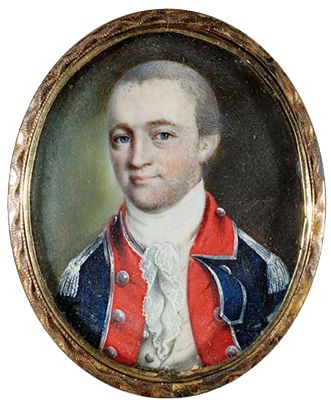9/19/2017

George Washington Never Slept Here, But…
Our club, as described by Article I of our Constitution, is organized for social purposes upon the land and water. Neither our land nor the water on which we sail was chosen for any historical significance. Yet, just days before the Club’s 25th anniversary in 1915, we received a letter from Howard L. Scofield, who lived and operated a monument business at 55 Woodland Place, next to Woodland Cemetery. His letter requested permission to install a bronze tablet on the boulder near the southwest corner of our property, commemorating the assembly and launch of Continental soldiers and boats that raided a British stronghold at Lloyd’s Neck on the night of September 5, 1779. Permission was granted and the tablet was unveiled as part of our Commissioning ceremonies on May 25, 1916, with members of the Stamford Historical Society as our guests.
The officer in charge of that raid was Benjamin Tallmadge, a classmate of Nathan Hale in Yale’s Class of 1773. While Hale was caught and executed less than three months after the Declaration of Independence was signed, Tallmadge survived his very active service as soldier and spy, and lived until 1835. Tallmadge was born and raised in Setauket, New York, near Port Jefferson. Because of his and his family’s associations there and Long Island’s serving as a British stronghold, that town served as the center of the Culper Spy Ring, which Tallmadge formed on orders from General Washington. The AMC Series “Turn” is based on the Ring, though it includes as much fiction as fact.
How factual is the story told by our bronze tablet? Some validity is suggested by its having originated outside the Club. Although our beach would be a good place to stage a raid on Long Island, the exact location of the mustering in 1779 is unknown, so the tablet’s wording begins “NEAR THIS SPOT…” The rest of the story was hand written by Tallmadge, himself. It was transcribed and published by his son 23 years after his death, and this may account for the misspelling of Shippan:
"Before the campaign closed, viz., on the 5th of September, 1779, I undertook an expedition against the enemy on Lloyd’s Neck, on Long Island. At this place, and on a promontory or elevated piece of ground next to the Sound, between Huntington Harbor and Oyster Bay, the enemy had established a strong fortified post, where they kept a body of about 500 troops. In the rear of this garrison a large band of marauders encamped, who, having boats at command, continually infested the Sound and our shores. Having a great desire to break up this band of freebooters, on the evening of said 5th of September, I embarked my detachment, amounting in the whole to about 130 men, at Shipam [sic] Point, near Stamford, at 8 o’clock in the evening, and by 10 we landed on Lloyd’s Neck. Having made my arrangements, we proceeded in different divisions to beat up their quarters. Our attack was so sudden and unexpected, that we succeeded in capturing almost the whole party a few only escaping into the bushes, from whence they commenced firing on my detachment, which gave alarm to the garrison. This prevented our attempting any attack upon the out-posts and guards of the fort, and after destroying all the boats we could find, as well as the huts of those refugees, we returned with our prisoners to our boats, and embarked for Connecticut, where we landed in safety before sunrise the next morning, and without the loss of a single man."
Unmentioned on the tablet is that Tallmadge returned to Shippan three years later. On December 5, 1782, he assembled about 700 men and boats on the peninsula’s west side. (According to a history of Stamford published for its 250th anniversary in 1892, it was “in the near vicinity of the present quarters of the Stamford Yacht Club.”) Tallmadge had sought permission for an attack on the British in Oyster Bay. Washington agreed, but stipulated that he would name the date. He did not mention that he intended this attack to prevent occupational forces in Long Island from aiding those in New York City when the Colonists launched a simultaneous attack from the North (Hudson) River. The Long Island attack was prevented by three days of high winds and rough water. Three sailboats did venture out and engaged with three enemy boats, destroying one and capturing another. The New York attack was aborted when deployment of British ships north of the City took away the element of surprise.
Disappointment was short-lived, however, because it was later learned that preliminary articles of peace were signed in Europe five days before the planned attacks. Though the Treaty of Paris was not finalized until nine months later, the War of Independence had been won.
Staff Commodore Christopher Hynes
Club Historian